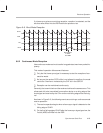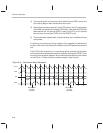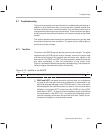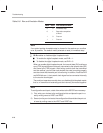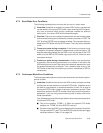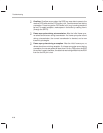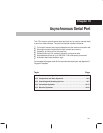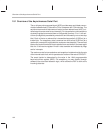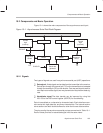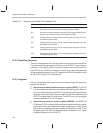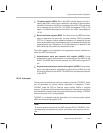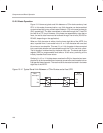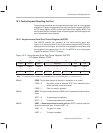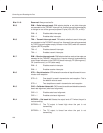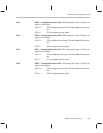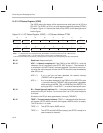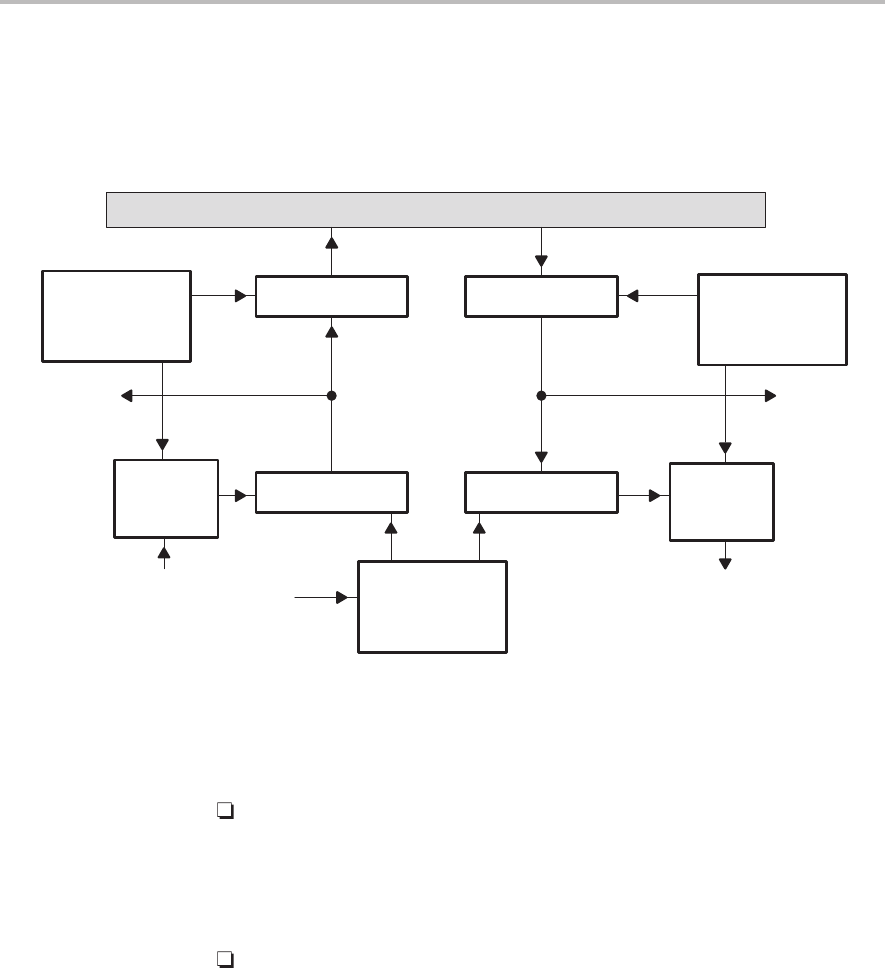
Components and Basic Operation
10-3
Asynchronous Serial Port
10.2 Components and Basic Operation
Figure 10–1 shows the main components of the asynchronous serial port.
Figure 10–1. Asynchronous Serial Port Block Diagram
TXRXINT
ADTR
ARSR
ADTR
AXSR
Control
logic
(transmit)
Control
logic
(receive)
TX
Baud-rate
generator
Sequence
control
Sequence
control
RX
TXRXINT
CLKOUT1
Internal data bus
10.2.1 Signals
Two types of signals are used in asynchronous serial port (ASP) operations:
Data signal. A data signal carries data from the transmitter to the receiver.
Data is sent through the transmit pin (TX) on the transmitter and accepted
through the receive pin (RX) on the receiver. One-way serial port transmis-
sion requires one data signal; two-way transmission requires two data sig-
nals.
Handshake signal.The data transfer can be improved by using bits
IO0–IO3 of the ASP control register (ASPCR) for handshaking.
Data is transmitted on a character-by-character basis. Each data frame con-
tains a start bit, eight data bits, and one or two stop bits. The transmit and re-
ceive sections are both double-buffered to allow continuous data transfers.
The pins used by the asynchronous serial port are summarized in Table 10–1.
Each of these pins has an associated signal with the same name.



